home | anatomy | physiology | pathology | clinical guides
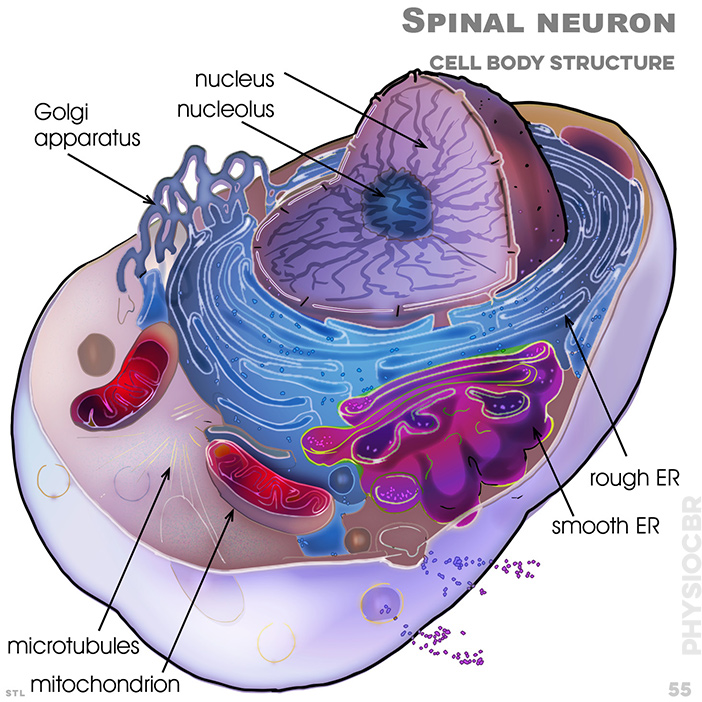
55. Spinal neuron: cell body structure: golgi apparatus, nucleus, nucleolus, microtubules, mitochondrion, smooth ER, rough ER
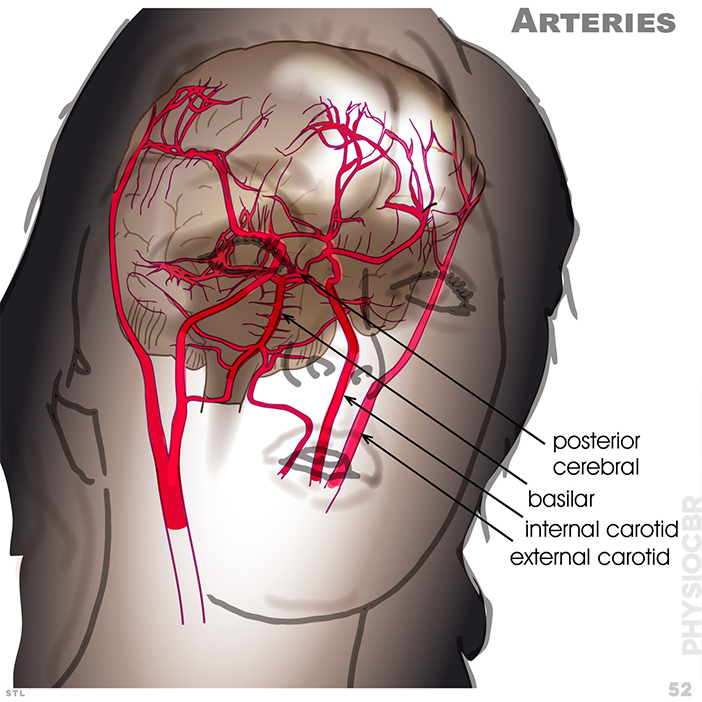
something
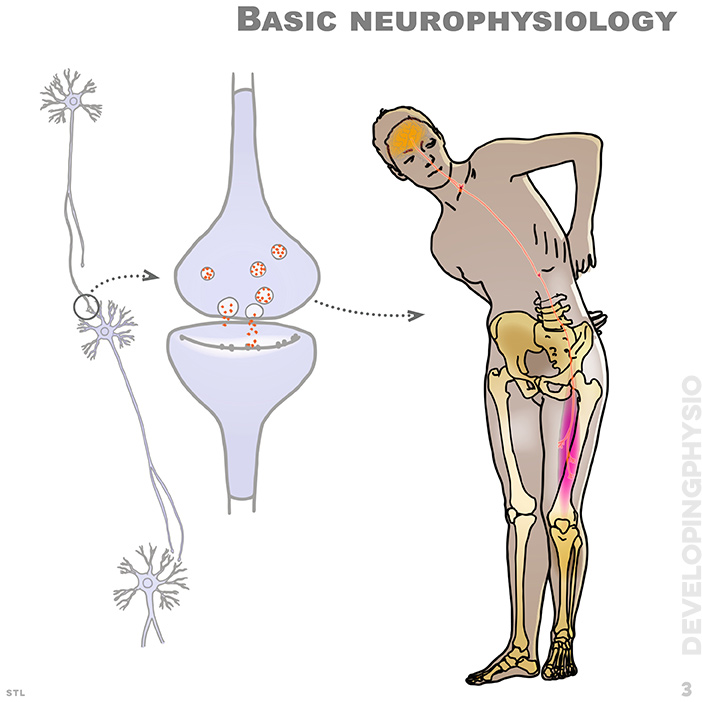
3. Neurophysiology: how brain and nerves work
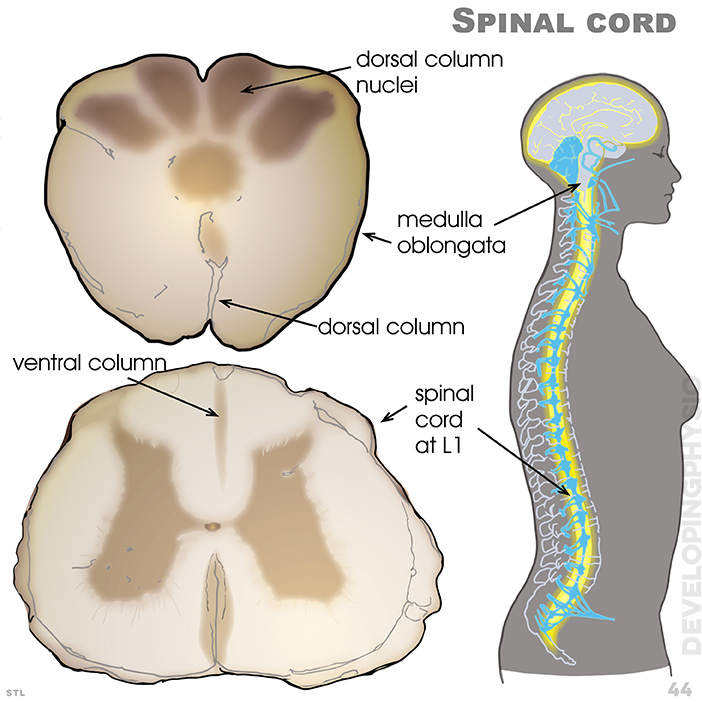
44. Spinal cord: two key section at medulla oblongata and first lumbar vertebra. dorsal column nuclei, medulla oblongata, dorsal column, ventral column, spinal cord at L1
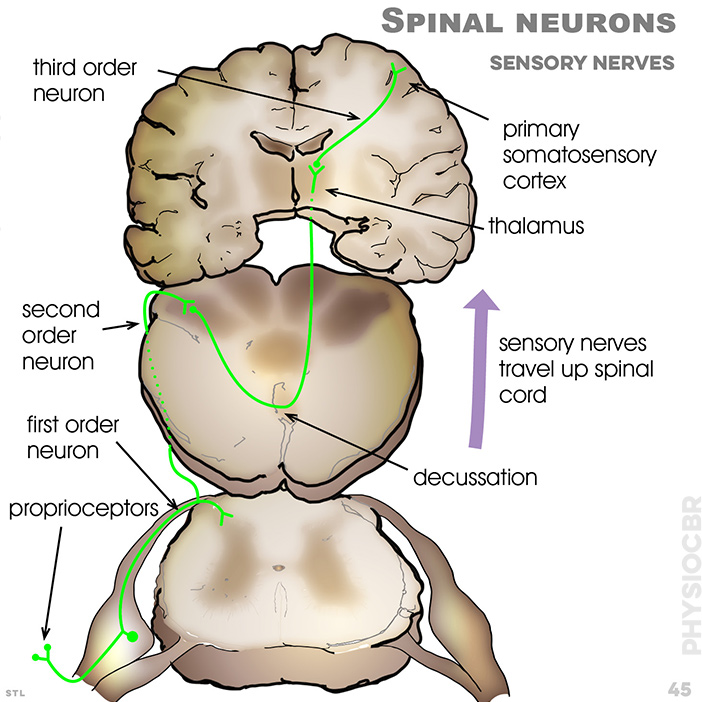
45. Spinal neurons: how they pass up the spinal cord; third order neuron, second order neuron, first order neuron, proprioceptors, primary somatosensory cortex, thalamus, sensory nerves travel up spinal cord, decussation

55. Spinal neuron: cell body structure: golgi apparatus, nucleus, nucleolus, microtubules, mitochondrion, smooth ER, rough ER
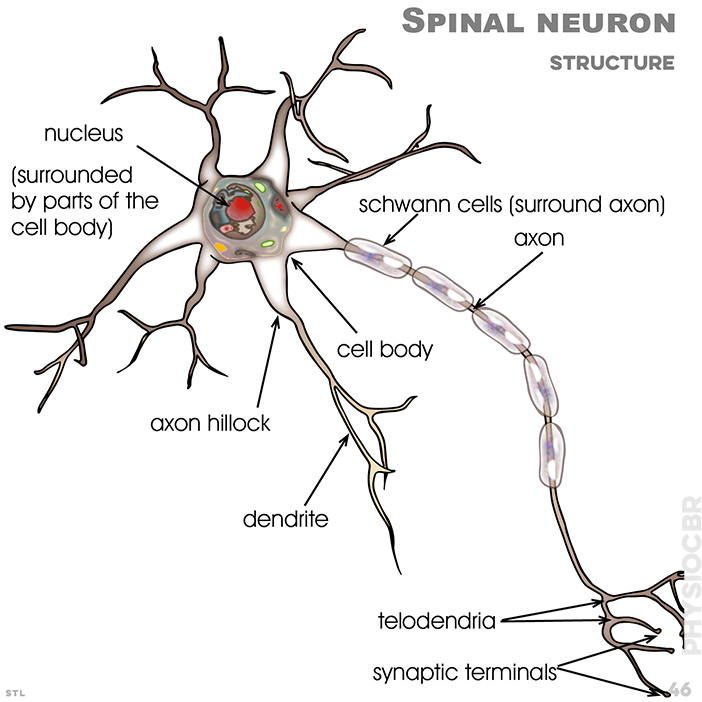
46. Spinal neurons: the basic elements of a neuron; nucleus (surrounded by parts of the cell body), schwann cells (surround axon), axon, cell body, axon hillock, dendrite, telodendria, synaptic terminals
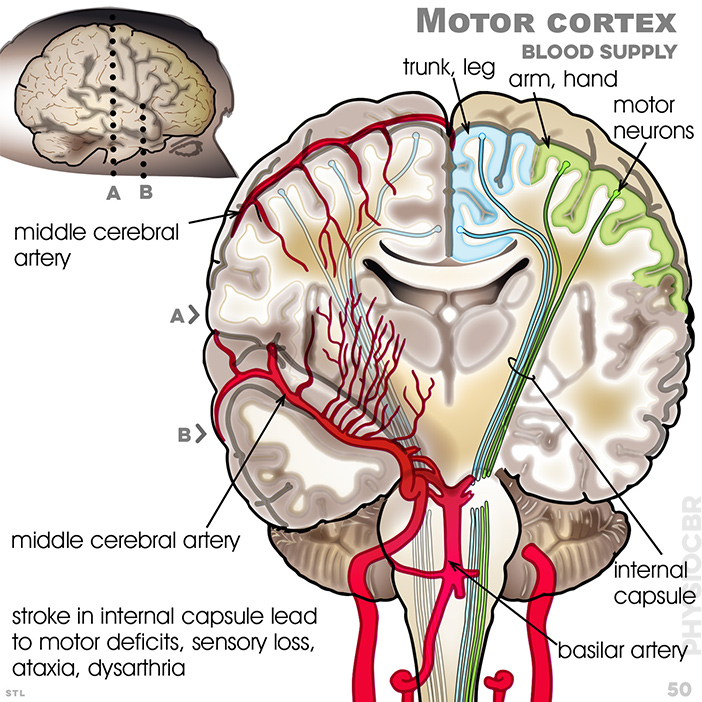
50. Motor cortex, blood supply: trunk, leg, arm, hand, motor neurons, middle cerebral artery, internal capsule, basilar artery; stroke in internal capsule leads to motor deficits, sensory loss, ataxia, dysarthria
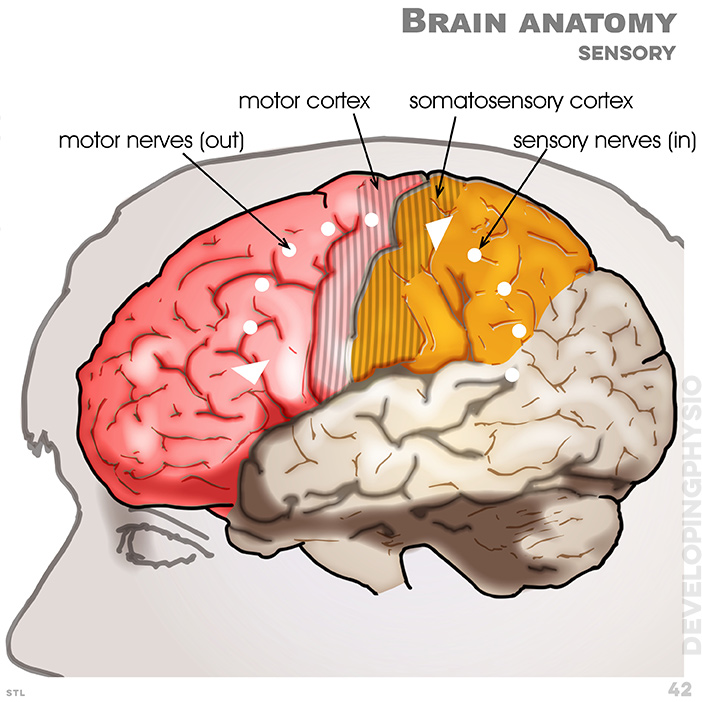
42. Brain anatomy, sensory: motor nerves (out), motor cortex, somatosensory cortex, sensory nerves (in)
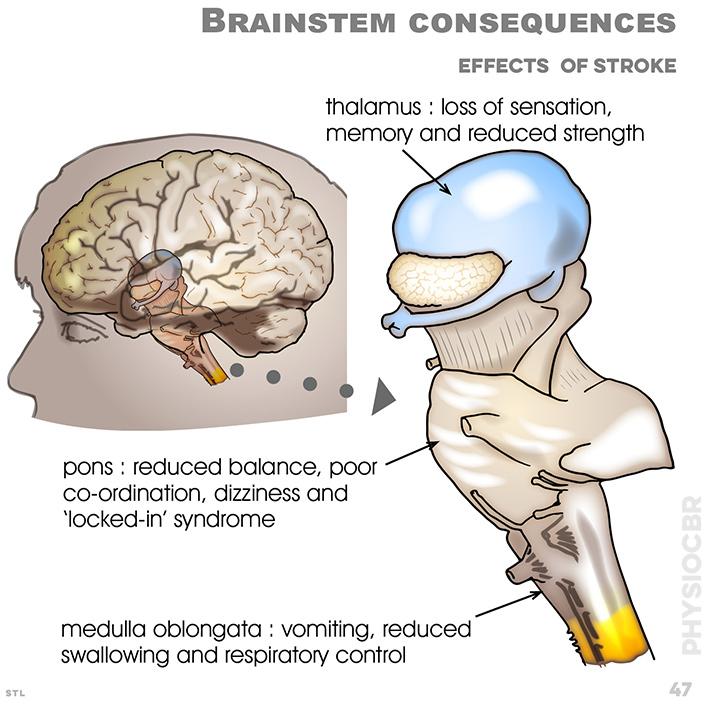
47. Brainstem consequences, effects of stroke: thalamus and loss of sensation, memory and reduced strength; pons and reduces balance, poor co-ordination, dizziness and 'locked-in' syndrome; medulla oblongata and vomiting, reduces swallowing and respiratory control

52. Arteries: posterior, cerebral, basilar, internal carotid, external carotid

31. Stroke region, normal condition

4. Normal gait pattern: stance phase, swing phase

5 Normal sitting balance: can sense space, aware of balance

6. Proproception: a ‘sixth sense’ that defines your sense of space, and where any object is relative to you. touch your hands without looking (this requires proprioception!) with eyes closed, touch your nose

7. Co-ordination and shin heel slide